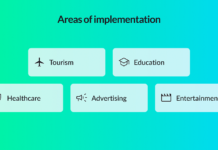Machine learning (ML) and artificial intelligence (AI) technologies play an integral role in the ongoing digital revolution. And, as most would assume, there are plenty of moving parts that place significant demands on the technical skills and expertise of those developing them.
In short, ‘teaching’ a machine is no mean feat – that much, we can surmise. But, given that data represents the building blocks of ML and AI, have you ever wondered how mountains of information get processed for these applications in the first place?
Data annotation or data labelling is the process of putting tags and assigning labels to raw data. For example, in an application designed for self-driving cars, you need a system that will recognize hundreds of images. These tags will instruct the AI application that the image before it is a person, another vehicle, or a building.
When and Why are Experts Necessary in Data Labelling?
Labelling raw data for AI applications can vary in complexity. While you may not need an expert to put tags on generally identifiable information, the same can’t apply to specialized data. For medical applications, for example, you’ll need a medical practitioner to identify and put tags to images with scientific names – and, of course, recognise the minute nuances that make medicine such a specialized discipline in the first place.
As such, finding the right personnel and doing everything by hand requires more time and resources.
Comparing Labelled and Unlabeled Data
There is no doubt that labelled data remains superior. But it doesn’t mean that raw, unlabeled information isn’t useful in ML and AI applications. Usually, unlabeled information is the precursor to processing data sets. Also, data without tags are most useful in unsupervised ML.
Yes, labelling data is a challenging and time-consuming task – but it is necessary to maximize the potential of AI. It opens up plenty of possibilities, especially in complex applications intended to improve human life.
The Role of Labelled Data In Machine Learning and Artificial Intelligence
One of the primary purposes of data labelling is to train AI. Training becomes more efficient when the application or machine recognizes images and patterns relevant to its intended use. This way, the machine can learn and make predictions even when you input new data sets without tags.
In short, the machine is learning through example. Moreover, further AI training using labelled data sets will lead to more complex forecasting. For instance, an AI application could predict stock market prices or in more practical terms, suggesting new products for customers based on their previous purchases.
Using labelled data in supervised learning
As we mentioned above, labelled data are most useful in supervised learning models for AI applications. Simply put, supervised learning refers to training an AI model to predict based on historical information. The targets are predefined to ensure that goals are specific. Now, there are plenty of similar applications already in use. Predicting and recognizing buying behaviors is probably one of the most common. This is the reason why you receive highly targeted marketing emails based on your purchase patterns. Eventually, there will be more complex applications of AI and ML. Applications in transportation, the medical industry, and many more are anticipated. Self-driving cars, for instance, will be a life-changing innovation for the transportation industry. And this is why data labelling remains superior, as opposed to using raw data without tags.








